Ignoring whatever you mean as "straight", here is one simple algorithm I can think of that would produce images to the one similar shown in the question. There is no guarantee of what is produced being the shortest path. I'm just spitballing here with no knowledge on the topic, there are probably better ways.
Pick 4 variables:
- The starting point
- The ending point
- The line's normal
- A marching constant
Let's calculate a few constants from the variables:
- Direction = ending point - starting point
- Increment vector = normalize(Direction) * marching constant.
Begin from the starting point and march towards your ending point by some constant, checking above and below your current position for where you are on the mesh. You use the line's normal to understand the "up" and "down" directions in order to perform intersection tests.
On each intersection test, if you do not intersect for both the up and down directions, then the normal you chose will not work for the given two points and mesh, and you'll have to try a different normal. If you do end up intersecting from one of the directions, you will need to add 2 points to your final line: a point on the calculated direction line closest to the start that lies on the triangle, and a point on the calculated direction line farthest from the start that lies on the triangle. If there's both an intersection on the up and down directions, choose the up direction to work with.


